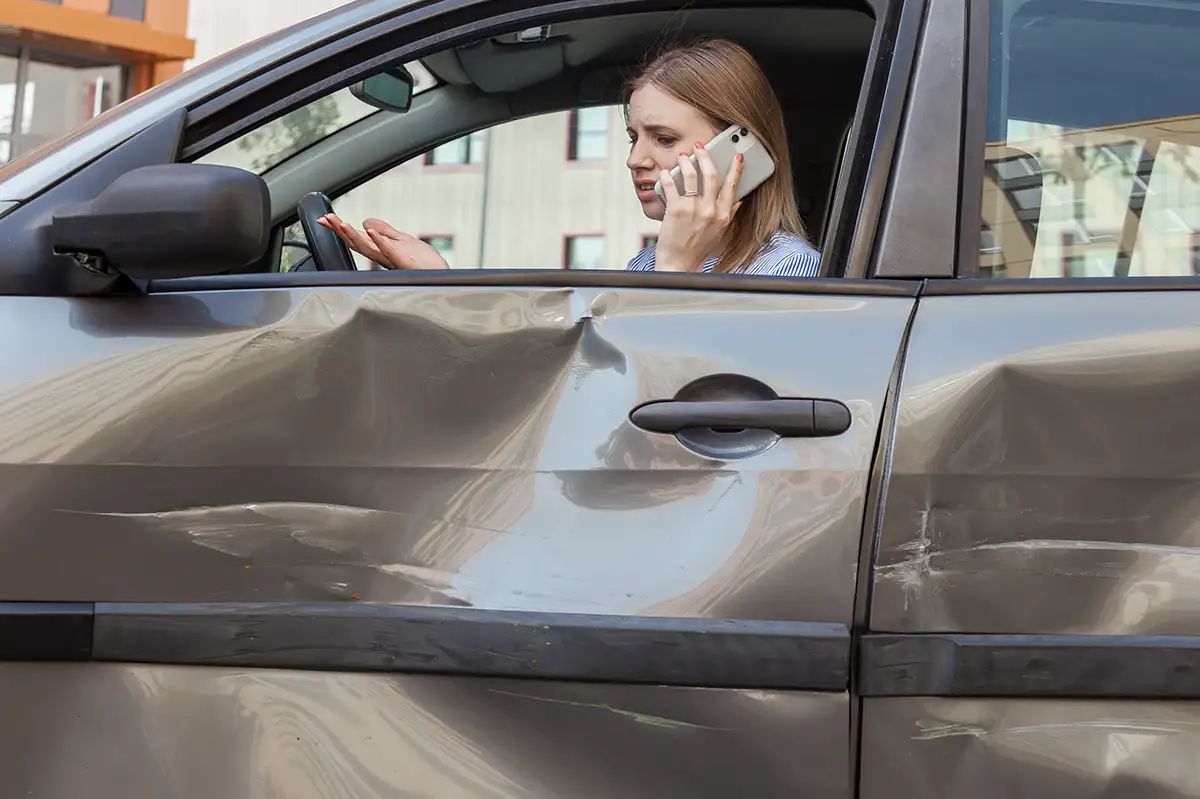T-bone accidents, also known as broadside or side-impact crashes, pose a grave threat to the safety and well-being of motorists and pedestrians alike. These catastrophic collisions occur when the front of one vehicle collides forcefully with the side of another, forming a “T” shape. The sheer force and impact of such crashes can cause devastating consequences, including severe injuries, property damage and even tragic loss of life.
As the population in Miami continues to grow, the risks associated with T-bone accidents have intensified, demanding heightened awareness and proactive measures to address this pressing issue.
If you or a loved one has been injured in a T-bone accident in Florida, you need a skilled car accident attorney who understands the complexities of these cases and can fight to get you maximum compensation after an injury.
Miami personal injury attorney Mike Redondo has the unique experience of having represented insurance companies early on in his career, so he understands the tactics they use to lower the value of your claim and how to push back against them so you can get the compensation you deserve.
What are the most common causes of T-bone accidents?
A T-bone accident is one of the most deadly types of crashes because the sides of a vehicle lack the protection found in the front or rear to absorb the impact. When a T-bone accident occurs, it can leave the occupant on the side of the car that’s hit reeling with injuries.
T-bone accidents are most likely to occur when one driver is traveling straight while the other is making a turn. Common causes of these crashes include the following:
- Distracted driving
- Speeding
- Aggressive driving
- Road rage
- Failure to yield
- Ignoring traffic signs and signals, such as running a red light
- Intoxicated or drunk driving
- Mistakenly thinking the light is green and driving through an intersection
- Dangerous road conditions
Common injuries from T-bone accidents
Typically, T-bone accidents result in devastating and often severe injuries because of the physical vulnerability of victims during side impact crashes. The most common injuries stemming from T-bone accidents include the following:
- Head injuries
- Traumatic brain injuries
- Back injuries
- Neck injuries
- Whiplash
- Broken bones and fractures
- Spinal cord injuries
- Facial injuries
- Hip injuries
- Knee injuries
- Organ damage and internal bleeding
- Ejection injuries
- Anxiety, depression and post-traumatic stress disorder
- Death
Some T-bone collision injuries can be exacerbated if a person is trapped inside the vehicle and emergency responders have to use the jaws of life to free the victim.
The basics of personal injury protection (PIP) insurance in Florida
Florida is one of the states that follow the no-fault system for car accidents. This means that all drivers are required to carry car insurance with personal injury protection (PIP) amounting to a minimum of $10,000.
PIP insurance is meant to cover drivers after a T-bone accident or any other type of collision, even if the policyholder was the one at fault. Benefits typically cover the vehicle owner, their spouse, their children and other members of their household.
What is covered under Florida’s PIP no-fault insurance?
After a T-bone or any other kind of car accident, Florida policyholders are covered for the following under their PIP coverage up to their policy limits:
- 80% of their medical expenses related to the accident
- 60% of their lost income if they cannot work due to their injuries
- $5,000 in death benefits if the accident resulted in death
It’s important to note that PIP insurance doesn’t cover property damage, and since many T-bone accident victims suffer serious injuries that require long-term medical treatment, these benefits are often far from sufficient.
What is the 14-day rule in Florida car insurance claims?
By Florida law, there is what is known as the 14-day rule for car insurance claims. When seeking car crash compensation through PIP coverage for personal injury, the person must receive medical treatment within 14 days of the incident.
This can be done by seeing a regular doctor or specialist or by going to the nearest hospital emergency room or urgent care. As long as the individual sees a doctor for medical treatment within that time frame, they can recover 80% of their medical expenses.
What’s considered a serious injury under Florida law?
Because of Florida’s no-fault car insurance laws, a victim can only file a personal injury lawsuit against a negligent driver if they sustained “serious” injuries in the accident. By Florida law, serious injuries include the following:
- Permanent or considerable loss of an essential bodily function
- Permanent injuries
- Disfigurement or permanent scarring
- Death
When a claimant’s injuries fall under these categories or when a victim has died, the at-fault driver can be held liable through their insurance and even a personal injury lawsuit, which allows for recovering both economic and non-economic damages.
What compensation can I get by filing a personal injury lawsuit after a T-bone accident?
If you can prove the other driver negligently caused the T-bone accident, you may be able to recover compensation for the following:
- Economic damages. This includes property damage, lost wages (both past and future) and medical expenses (both past and future).
- Non-economic damages. This includes compensation for nonmonetary damages like pain and suffering, emotional distress and loss of companionship.
In some rare cases, punitive damages may also be awarded if the driver’s actions were especially careless or intentional.
Who’s usually at fault in a T-bone accident?
Liability in T-bone accidents depends on the specific circumstances and the applicable traffic laws. In general, however, the driver who fails to yield the right-of-way or violates traffic rules is often considered at fault in a T-bone collision.
Some of the factors that determine fault in these types of crashes include the following:
- Right-of-way violations. If a driver fails to yield the right-of-way at an intersection, such as running a red light, making an illegal turn, or disregarding stop signs, they are typically deemed at fault.
- Speeding. Excessive speeding can significantly impact a driver’s ability to stop or react in time, increasing the likelihood of causing a T-bone accident. The driver exceeding the speed limit may be held accountable for the collision.
- Distracted driving. Engaging in distractions like texting, talking on the phone or other activities that divert attention from the road can lead to T-bone accidents. The driver who was distracted may be considered at fault.
- Intoxicated driving. Driving under the influence of alcohol or drugs impairs judgment, coordination and reaction time, making it more likely for a driver to cause a T-bone accident. In such cases, the intoxicated driver is typically held responsible for the collision.
A guide to Florida car accident negligence claims
Learn how to prove negligence after a car accident in Miami so you can increase your chance of a successful accident claim.
Can the driver who has the right of way be partially at fault for a T-bone accident?
Although it’s often clear who is responsible for a T-bone accident, there are also times when one party is partially at fault. For instance, if a driver had the right-of-way but was traveling a few miles per hour over the legal speed limit at the time of a T-bone accident, they might be considered partly responsible.
What if I’m partially at fault for an accident in Florida?
Florida uses the comparative negligence rule for car accidents, which means that both parties can share a level of fault. By law, if the plaintiff is determined to be 50% or less at fault for an accident, they can still recover damages. However, their compensation is reduced by their percentage of fault.
So if a plaintiff would have been awarded $100,000 in damages but a judge determines they are 20% responsible for the accident, their final compensation would be reduced by 20%, so they would receive $80,000.
What evidence is needed to prove fault?
It’s important to note that fault is determined on a case-by-case basis, and the types of evidence needed to prove negligence vary but may include any of the following:
- Evidence and photos collected from the accident scene
- Witness statements
- Police reports
- Traffic camera or bystander footage
- Medical records
- Expert analysis
Steps to take after a T-Bone accident
If you find yourself involved in a T-bone crash in Florida, it’s crucial to take immediate action to protect your well-being and legal rights. Here are the steps accident victims should take:
- Contact law enforcement. Dial 911 to report the accident to the police. Having an official accident report on file is important for insurance purposes and future legal proceedings.
- Gather information. Collect information from the scene of the accident. Obtain the names, contact information and insurance details of all parties involved in the crash. Get statements and contact information from any witnesses as well. Be sure to take photos of the vehicles involved, the accident scene and any visible injuries.
- Document the accident. Note any crucial details about the accident, such as the date, time, location, and road and weather conditions. Be specific about how the accident unfolded and any contributing factors you noticed, such as traffic signals or signs.
- Seek medical attention. Even if you don’t initially feel injured, it’s essential to seek medical evaluation and treatment as soon as possible. Some injuries aren’t immediately evident and could become serious if left untreated. Additionally, obtaining medical documentation will be crucial for any potential personal injury claims.
- Notify your insurance company. Promptly inform your insurance company about the accident. Provide them with accurate and detailed information about the incident, but be cautious while speaking to them and avoid admitting fault or speculating about your injuries.
- Consult with a personal injury attorney. Consider seeking legal counsel from an experienced personal injury attorney who specializes in handling T-bone accidents. They can guide you through the legal process, protect your rights, and help you pursue a fair settlement or litigation, if necessary.
- Don’t post on social media. While your case is pending, avoid discussing the accident or your injuries on social media platforms. Insurance companies and opposing parties may monitor your online presence, and any statements made can be used against you.
- Follow medical recommendations. Follow your healthcare provider’s instructions for treatment, follow-up appointments and rehabilitation until your case is settled. It’s essential to prioritize your recovery and demonstrate that you’re taking the necessary steps to heal to get maximum compensation for your claim.
Contact an experienced Miami T-bone accident attorney
If you or a loved one has been the victim of a T-bone accident in Miami, it’s crucial to seek the support and guidance of a dedicated attorney who specializes in representing plaintiffs in these types of cases. At Redondo Law, attorney Mike Redondo has a proven track record of successfully representing those injured through the negligence of others, always placing client satisfaction above all else.
To better help his clients and increase access for anyone who’s been injured in an accident, Mike speaks both Spanish and English and is happy to offer a free, comprehensive evaluation to potential clients.
Contact us today so we can help you get the compensation and justice you deserve.


